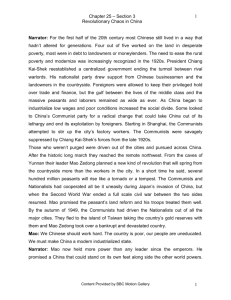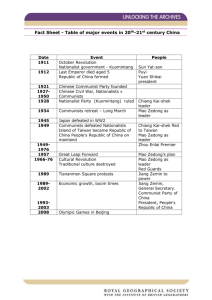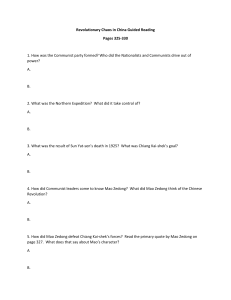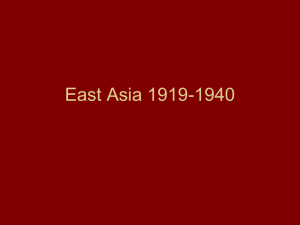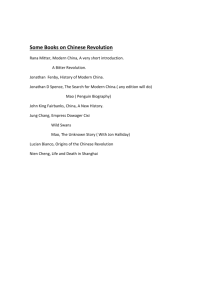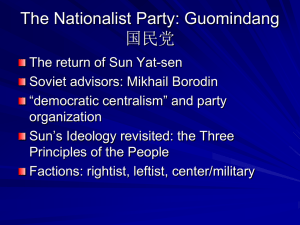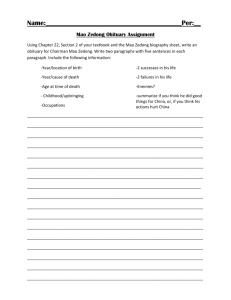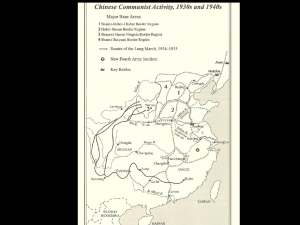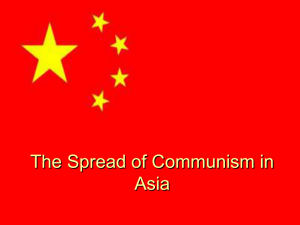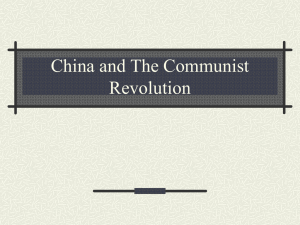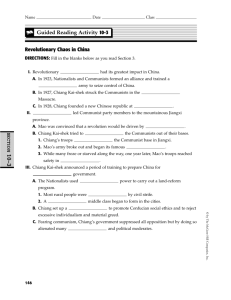Chinese Revolution: Causes, Effects, Key Figures
advertisement
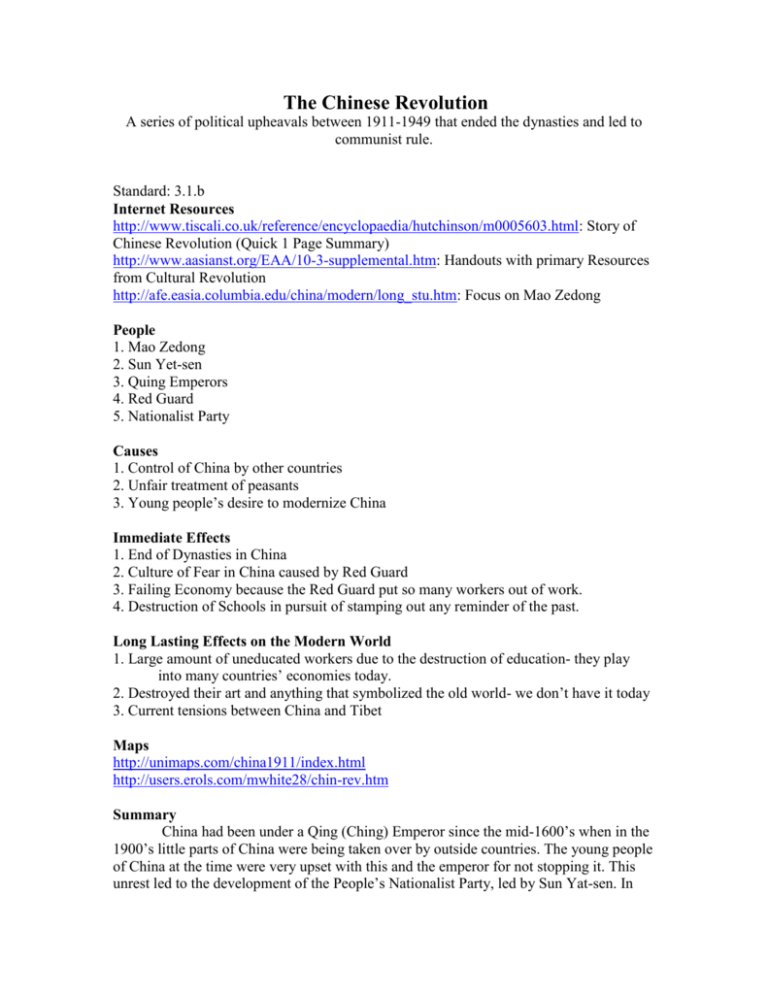
The Chinese Revolution A series of political upheavals between 1911-1949 that ended the dynasties and led to communist rule. Standard: 3.1.b Internet Resources http://www.tiscali.co.uk/reference/encyclopaedia/hutchinson/m0005603.html: Story of Chinese Revolution (Quick 1 Page Summary) http://www.aasianst.org/EAA/10-3-supplemental.htm: Handouts with primary Resources from Cultural Revolution http://afe.easia.columbia.edu/china/modern/long_stu.htm: Focus on Mao Zedong People 1. Mao Zedong 2. Sun Yet-sen 3. Quing Emperors 4. Red Guard 5. Nationalist Party Causes 1. Control of China by other countries 2. Unfair treatment of peasants 3. Young people’s desire to modernize China Immediate Effects 1. End of Dynasties in China 2. Culture of Fear in China caused by Red Guard 3. Failing Economy because the Red Guard put so many workers out of work. 4. Destruction of Schools in pursuit of stamping out any reminder of the past. Long Lasting Effects on the Modern World 1. Large amount of uneducated workers due to the destruction of education- they play into many countries’ economies today. 2. Destroyed their art and anything that symbolized the old world- we don’t have it today 3. Current tensions between China and Tibet Maps http://unimaps.com/china1911/index.html http://users.erols.com/mwhite28/chin-rev.htm Summary China had been under a Qing (Ching) Emperor since the mid-1600’s when in the 1900’s little parts of China were being taken over by outside countries. The young people of China at the time were very upset with this and the emperor for not stopping it. This unrest led to the development of the People’s Nationalist Party, led by Sun Yat-sen. In 1911 the People’s Nationalist Party forced the emperor out and created a republican government. The People’s Nationalist party was unable to unite China or force out the various countries that were claiming land there. When Sun Yat-sen died Chiang Kai-shek took his place and built up the nationalist army. With his army he reclaimed Chinese land from other countries. Then the Nationalist Party split forming a Communist party who believed that the peasants should have a say in the government. Chiang Kai-shek disagreed with this and sided with the wealthy farmers. He then forced all the communists into a small area in southern China. The exiled Communist started an exodus to Yan’an in Northwestern China. This 6,000mile trek is known as the Long March, and only 8,000 of the 100,00 communists survived. During the Long March Nationalists attacked and the Communists found a leader, Mao Zedong. Mao and the Communists claimed the Northwest lowering taxes and giving the peasants more power. As more and more Chinese heard of Mao’s changes they joined the communists. Eventually a communist army put together by Mao drove Chiang Kai-shek and the Nationalists out of China and into Taiwan. Mao now started making changes all over China. Economically he set up 5-year plans that focused on making farming communes and growing industry. He also appointed fellow communist believers to important government positions. Around 1966 Mao decided that not enough people were supporting his government, so he decided that the country needed a Cultural Revolution. He got college students and young people involved in destroying the past. The tore down architecture that was representative of the past. The destroyed art and books from the days of the emperors. Mao also put together the red guard which questioned people about the allegiance to the communists and even jailed or executed individuals who they thought were not good communists. However in 1968 Mao put a stop to the Cultural Revolution feeling it had gone too far.
